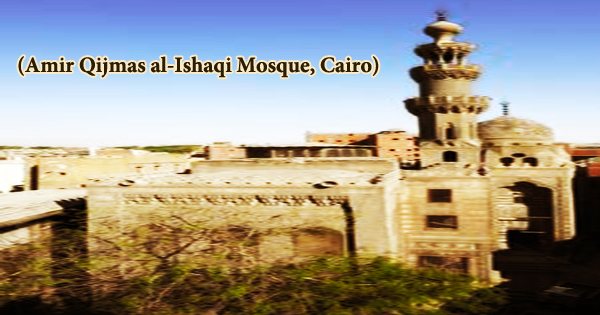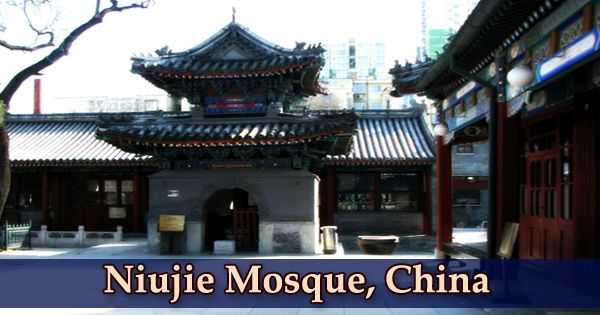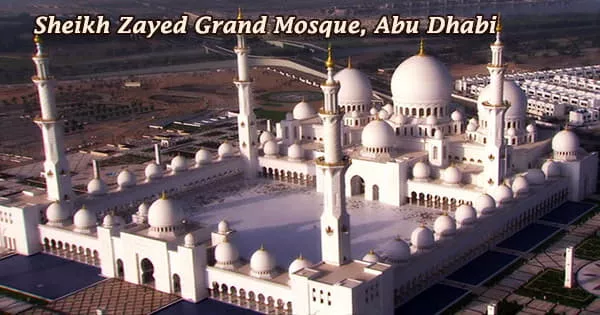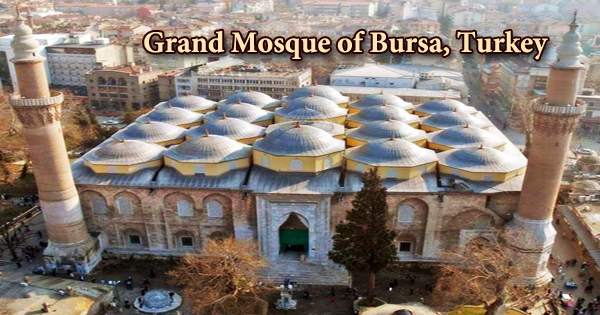The Huaisheng Mosque (Chinese: 广州怀圣寺), also known as the Lighthouse Mosque and the Great Mosque of Canton, is China’s oldest surviving mosque and has the country’s oldest freestanding minaret. The mosque’s white minaret soars into the sky, echoing the tones of ancient caravans passing through the Arabian Peninsula’s sands, bringing not only trade and goods but also a plethora of innovations, talents, and philosophies. The mosque is one of the four great mosques along Southeast China’s coast. It’s in the city of Guangzhou, in the province of Guangdong. It has been rebuilt several times in its history, but it is believed to have been constructed over 1,300 years ago, making it one of the world’s oldest mosques. According to manuscripts from 1206 dating from the first Muslim mission to China in the 630s, the mosque was founded by an uncle of the Prophet, Abi Waqqas. It is more likely, however, that a mosque was first constructed here during the Tang Dynasty or during the early years of the Song Dynasty. The mosque was fully rebuilt in 1350 under the rule of Zhizheng (1341-1368) of the Yuan dynasty, and then destroyed in a fire in 1695 under Emperor Kangzi of the Qing dynasty. The Huaisheng Light Tower, the mosque’s one-of-a-kind namesake minaret, was constructed at a different time. The Great Mosque of Guangzhou, like its counterparts in Quanzhou, Hangzhou, and Yangzhou, is notable for combining local Han building traditions with imported Arab styles. The mosque has a long history and is as well-known as Yangzhou City’s Crane Mosque, Quanzhou City’s Qingjing Mosque, and Hangzhou City’s Phoenix Mosque. Wan Gesi, the first Islamic disseminator, is said to have founded the Huaisheng Mosque in the early Tang Dynasty (618-970). The Huaisheng Mosque is not the same as the Sa’ad bin Abi Waqqas Mosque, which is said to house Sa’ad bin Abi Waqqas’ tomb as well as the tombs of other famous Muslims. The Abi Waqqas Mosque, located at 901 Jiefangbei Road, is Guangzhou’s largest mosque. The Yuexiu Park Metro station, Line 2, is the closest Metro station. The Guangta or Kwangtah, a pointed 36-meter minaret in China, is the mosque’s most unusual feature. While it originally meant “Plain Pagoda” in reference to its plain exterior, it is also often misinterpreted as “lighthouse,” giving the mosque its alternate name. Outside of China, similar “minimalist” minarets can be found at the Khan’s Mosque in Kasimov, Russia. Huaisheng Mosque is one of China’s oldest mosques, as well as one of the world’s oldest surviving mosques, despite being demolished and rebuilt several times.
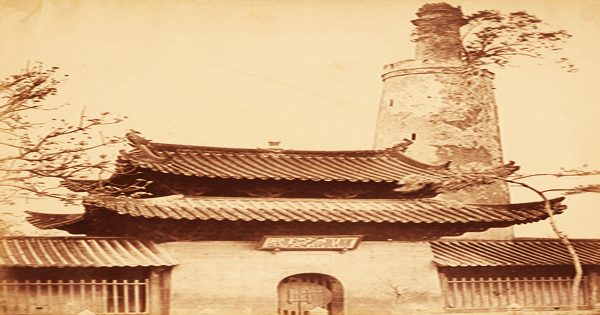
The mosque complex is about 3,000 square meters in size and is built along the north-south axis in the Chinese style. It is a bustling mosque and a significant gathering place for Muslims in China. It attracts a large number of Muslims, both foreign and Chinese, who come to pray. With Guangzhou re-emerging as a global trading center, it’s worth noting that the majority of international merchants hail from the same parts of the globe as the caravans did during the Tang Empire’s rule. Tim Severin’s crew of the Sohar, which sailed into Canton from Muscat in July 1981, recreating the fictional voyage of Sinbad the Sailor, paid a visit to the mosque. On Fridays, about 2000 Muslims attend the congregational prayer. There are fewer prayers on other days, but all five regular prayers are offered in the mosque in congregation. The minaret, which stands 36 meters tall and has two floors, was the city’s tallest structure before the turn of the century. In the Middle Ages, it was a valuable unit that served as a lighthouse, wind vane, and control tower. The mosque complex consists of a U-shaped corridor enclosing a courtyard with a wide Bangke tower to the north, followed by the prayer hall, which is entered from a red-brick gate with a green awning on Guangta Road to the south. The mosque’s most prominent feature, the old minaret or light tower, which flanks the main gate behind the street wall, dominates the streetscape. The structures are a blend of traditional Chinese and Arabic architecture. The walls and pillars are covered in Arabic calligraphy. A small courtyard surrounded by high brick walls leads from the main gate to an inner gateway, passing by the old light tower on the left. This massive gateway is designed to look like a bangke castle, with a wooden frame encased in brick. After being destroyed in a fire in 1350, the mosque was restored in 1350 and then again in 1695. The Huaisheng Light Tower, also known as a minaret, was constructed at a different time. The minaret tower was one of Guangzhou’s most popular landmarks as late as the nineteenth century. In 1935, the prayer hall was reconstructed in concrete. A portico, arcaded with columns joined by half dougong joints, wraps around the north, east, and southern sides of the prayer hall. The main entrance was relocated from the east to the south façade of the hall during the reconstruction so that it could open directly into the courtyard to the south. The mihrab is set in a shallow semi-circular niche that protrudes from the western wall. Green tiles cover the hipped roof, which is backed by two internal columns in addition to the walls. The two tiers of this stacked roof are separated by a row of glass. It is a major tourist attraction for Muslims in Guangzhou, as well as an architectural highlight due to its long history and distinctive architecture. The roof is made of blue-green tiles, which provides a warm color to the mosque city. The spacious hall is lined with prayer mats and has Arabic calligraphy on the walls. The base of the dome is adorned with two tiers of dougong brackets, giving the minaret a Chinese character. With modern stone carving, the Guangta Stone Carving on the wall of the mosque’s west corridor depicts the past of the Huaisheng Mosque and the Guangta Minaret. The complex also includes imam quarters, a tablet pavilion for scripture storage, and an ablution room, all of which are built in the open pagoda style with typically sculpted and tiled roofs that complement the prayer hall and secondary gateway roofs. In the mosque city, there is a section with Islamic books. It also has several magazines and Quran versions. Imams and scholars from other Muslim provinces also pay a visit to this place.

